
Blue Moon: Mystery and Charm
The blue moon phenomenon can be defined as a rare phenomenon in which the moon appears in the full moon phase again during a certain period of time, and this period has two different definitions, as a blue moon, according to the modern definition, is the second full moon that appears in the Gregorian month.
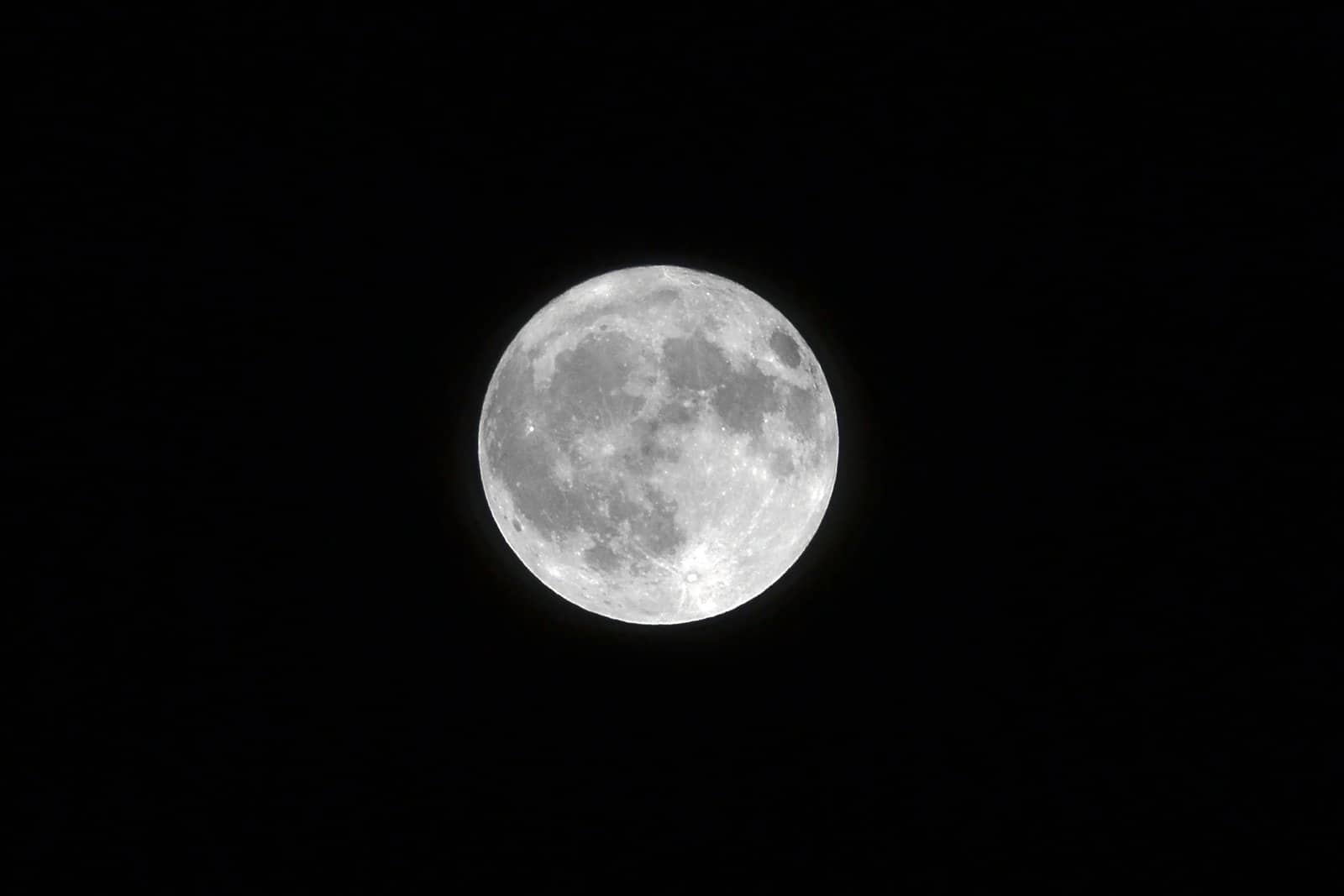
The occurrence of the blue moon phenomenon takes place when the first full moon must appear at the beginning or near the beginning of the month in order for the second full moon to appear in the same month, and the average time between the two full moons is 29.5 days.
While the blue moon, according to the definition of the Old Farmers’ Almanac, is the third full moon that appears in the same season in which it occurs four full moons, as one season typically lasts for three months, and has three cycles, whether it is autumn, winter, spring, or summer. The blue moon phenomenon usually occurs every two to three years.
Astronomers believe that the moon was formed after a Mars-sized mass or a series of such large objects hit the early earth. It is likely that the material that was scattered into space formed the closest neighbour to earth.
It was difficult to determine the date because the rocks collected by the Apollo astronauts and the scientists studied tend to be breccia, a mixture of different types of rock squashed together by meteorite strikes. This commonly happens on the lunar surface because the moon has almost no atmosphere to repel meteors and meteorites.
Is the blue moon really blue?
The blue moon often appears pale grey or white according to NASA, and it cannot be distinguished from the moon we always see. The appearance of two full moons in the same calendar month does not change the moon’s physical characteristics, so it appears in the same natural colour.
Therefore, we can say that the blue moon is often not actually blue in colour, but rather this term is usually used in folklore to describe this rare and strange phenomenon, and this moon can also be yellow or red in colour, or it may tend to be blue in some cases.
Smoke and ash resulting from large forest fires and volcanic eruptions lead to clouds of particles more than 0.7 micrometres wide. When these particles are present with small amounts of other particles of different sizes, they scatter blue light, which makes the moon appear in this colour. The moon actually appeared blue in 1883 when the Indonesian volcano Krakatoa erupted and after the eruption of the El Chichon volcano in Mexico.
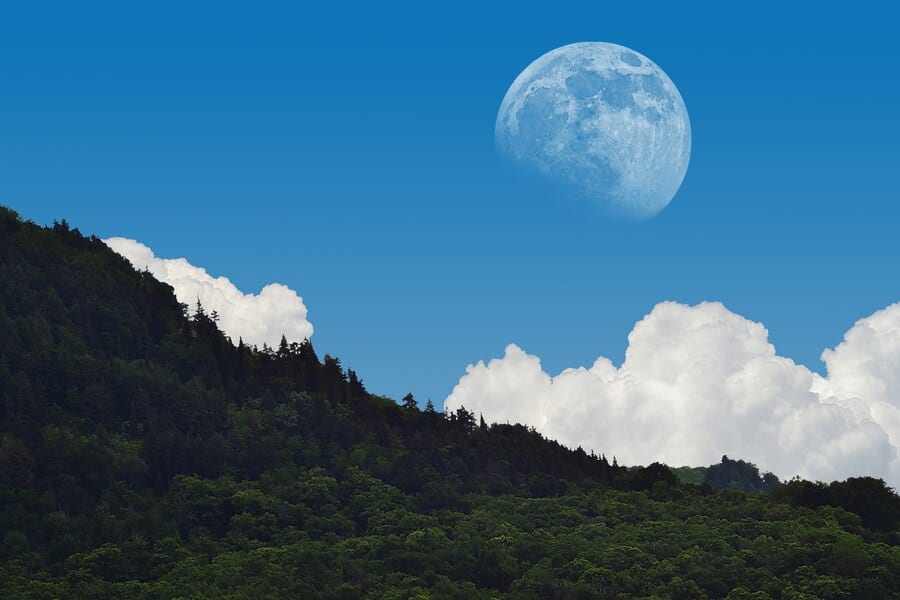
Can the moon turn blue?
The answer to this question is yes; however, this is a rare phenomenon. As a matter of fact, you can say it happens “once in a blue moon”. According to NASA, an Indonesian volcano called Krakatoa erupted in 1883 and spread ash up to 50 miles (80 kilometres) into the atmosphere. Tiny ash particles acted as a filter that scattered red light and turned the moon into a distinct blue-green colour.
According to NASA Science, other volcanic eruptions are also known to cause blue moons, including the 1983 eruption of El Chichon in Mexico and the 1980 eruption of Mount Pinatubo and Mount St. Helens in 1991.
How often does the blue moon occur?
According to NASA, blue moons occur every two to three years. The approximate period between every full moon is 29.5 days which means that February will never have a Blue Moon month because it only has 28 or 29 days. On some occasions, February does not have a full moon. It rather has what is known as a black moon, depending on the time and date.
Many clues point to a strong connection between the blue-coloured moon calendar and the year’s four seasons. All the blue moons listed fall on the 20th, 21st, 22nd, or 23rd of November, May, February, or August. These dates fall about a month before the winter and summer solstices in the northern hemisphere. The vernal and autumnal equinoxes, respectively, occur in similar daily numbers.
Although the idea of a seasonal pattern immediately came to mind, checking the details required much work. It has been shown that this phenomenon depends on the seasons, but with some subtle fluctuations, rather than the calendar year extending from 1 January to 31 December.
The calendar is based on the tropical year, defined as the span from one winter solstice to the next. Most tropical years contain 12 full moons, three each in winter, spring, summer and fall, each called for an activity appropriate to the time of year. Sometimes a tropical year has 13 full moons so that one season has four instead of the usual three.
The times of occurrence of the blue moon phenomenon, according to the definition of the old farmers’ calendar, the blue moon phenomenon occurred on 21/11/2010. It occurred again on the 20-21 of August 2013, and on the date of 21/5/2016, it occurred on 5/18/2019, and accordingly, the next blue moon is expected to appear on 8/22/2021. However, according to the modern definition, the blue moon appeared on 31/7/2015 and again on 31/1/2018, as it also appeared in the same year on 31/3/2018, 31/10/2020, and 31/8/2021.
When is the next blue moon?
The date of the following phenomenon may be on 30/31 August 2023. The moon will shine brightly in the night sky again. It is worth mentioning that August is the month of the second full moon.
When to have a full moon?
The full moon appears approximately every 29.5 days, which is the period it takes for the moon to complete a lunar cycle in which it passes through its phases one after the other, which is what is known as the Lunar Month. A few days were added to some months so that the twelve months together constitute a full solar year of 365 days.
Given that the current calendar is not entirely in line with the moon’s phases, sometimes a full moon appears more than once a month, and this phenomenon is called the blue moon.
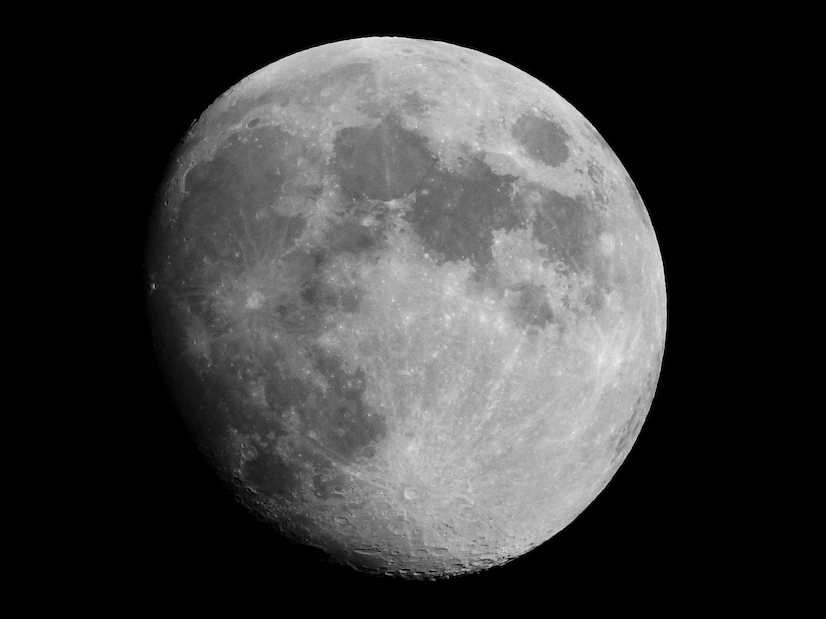
The full moon appears in the east of the sky at sunset and continues to move until reaching the top in the middle of the distance at midnight and sets at sunrise, and when the moon appears in the full moon phase, it will remain so in the sky for two or three nights, and there are usually two dates. Two selectors for the date of the full moon on the calendar, one in UTC and the other in local time,
The full moon may sometimes appear in the middle of the day, and the reason for this is due to the Syzygy phenomenon, the time when the sun and moon align on both sides of the earth, and this phenomenon may occur day or night.
Names of the full moon according to the month the following table shows some names of the full moon according to the month in which it appears according to different cultures:
| Month | Full Moon Name |
| January | Wolf Moon and Holiday Moon |
| February | Snow Moon and Budding Moon |
| March | Worm Moon, Sleepy Moon |
| April | Pink Moon, Peony Moon |
| May | Flower Moon, Dragon Moon |
| June | Strawberry Moon, Lotus Moon |
| July | Buck Moon, Hungry Ghost Moon |
| August | Sturgeon Moon, Harvest Moon |
| September | Corn Moon, Chrysanthemum Moon |
| October | Hunter’s Moon, Kindly moon |
| November | Beaver Moon, White Moon |
| December | Cold Moon, Bitter Moon |
Full Moon Phase Overview
The moon is full when it appears as a wholly illuminated circle in the sky. In fact, the shape of the moon does not change, but somewhat its appearance changes due to the difference in its surface area that can be seen from the earth, which is determined by the relative positions of the sun, the earth and the moon.
As the moon begins In the waning phase that results when the moon is between the earth and the sun, consequently, the side of the moon facing the earth appears dark, and as the moon continues to rotate in its orbit around the earth, the area of the illuminated part of the moon that appears to us increases, until reaching the full moon phase that occurs when the earth is between the sun and the moon.
The moon is then full in the sky, and then the illuminated part of the moon begins to diminish until it returns to the new phase again.
Moon Phases in Order
1. New Moon
it is called that because it is the beginning of a new lunar cycle when the moon and the sun are inseparable so that they are as close as possible to each other. The moon appears dark when viewed from the earth, as the illuminated part is on the other side facing the sun’s light, and the moon is between the sun and the earth. If we look at it from the earth, it will be as if it had completely covered the sun or part of it, and then the solar eclipse occurs.
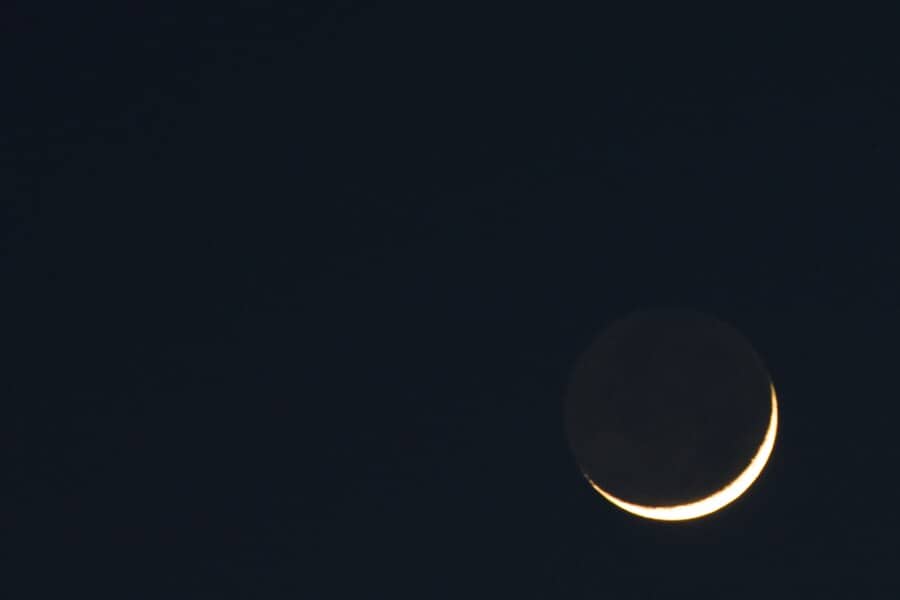
2. Waxing Crescent
It is known as the growing crescent, and the crescent phase comes immediately after the waxing phase. This phase results when the moon begins to rotate around the earth, and the side that we look at from the earth becomes more illuminated due to direct sunlight.
3. First Quarter
This phase occurs when half becomes the right side of the moon is luminous, and the left side is dark, and the luminous part grows gradually every day and continues until the full moon. It is indicated that the moon in this phase is 90 degrees from the sun. It is called the first quarter because the moon crosses half the distance around the earth, starting from the New Moon phase.
4. Waxing Gibbous
This phase results when more than half of the moon is exposed to sunlight, as the illumination area continues to increase, and this phase begins when the illumination reaches 50%. It was derived from its first name, gibbous, from the moon’s shape during this phase, which is slightly less than the full moon and more extensive than the shape of the semicircle of the third quarter. In contrast, the second name (waxing) comes from the increasing illumination of the moon during this phase, as it increases from 50.1% to 99.9%.
5. Full Moon
This phase results when the moon is in one straight line with the sun and the earth so that the earth is in the middle between the moon and the sun, and the bright side of the moon is facing the earth, just as the moon is It is very bright due to the sunlight reflected from it.
At this stage, the moon is complete, and it is called a full moon, and this phase occurs when the moon is 180 degrees away from the sun. It is indicated that it is rare for the sun, the earth and the moon to form a perfect line (for the moon to be right in the middle between the earth and the sun) because the orbit of the moon It is not at the same level as the earth’s orbit around the sun. When the three are arranged in a perfect line, then a lunar eclipse occurs.
6. Waning Gibbous
This phase begins when more than half of the moon is exposed to sunlight, and then its illumination continues to decrease. It is indicated that the diminishing hump often rises in the sky before midnight and after sunset and sets after sunrise, and the illumination of the illuminated part of the moon decreases in this phase from 99.9% to 50.1%, so it is sometimes difficult to distinguish the first stage of the diminishing humpback from the full moon phase when its surface is illuminated by 98% to 99%.
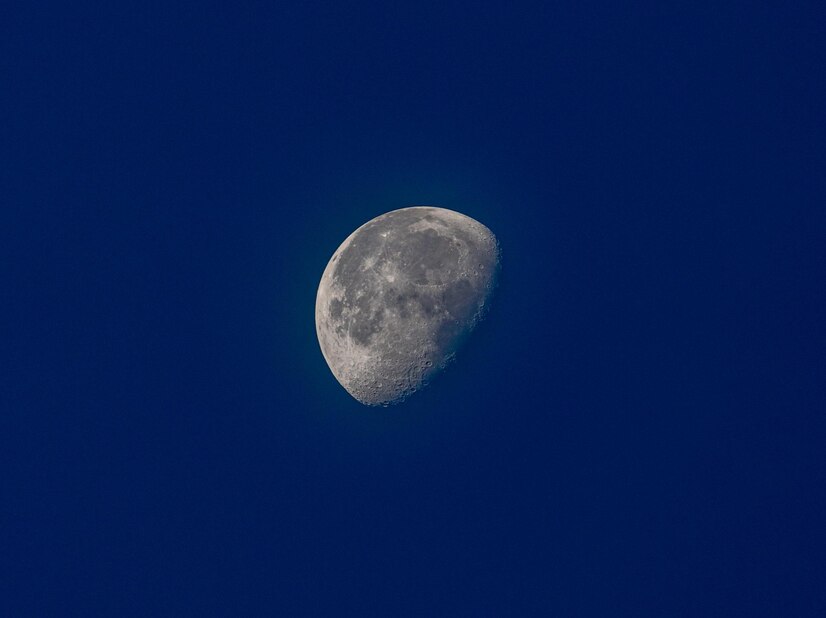
As for a reason behind calling it the waning gibbous, the waning gibbous refers to its rounded oval shape, and the diminishing one indicates that it is shrinking and getting smaller.
7. Last Quarter
This phase of the moon begins when the left side of the moon lights up, and the right side becomes dark. During this phase, the illuminated part of the moon decreases little by little every day until it shrinks and reaches the new or waning moon phase. Then a new cycle begins as the moon reaches its last quarter a week after the full moon.
The moon is then in the quadrature, just as the second quarter moon rises in the sky at midnight, then crosses the meridian at sunrise and does not set until noon, and the second quarter phase is repeated every 29,531 days.
8. Waning Crescent
This phase is the last phase of the lunar month. It begins immediately after the second quarter phase and continues until the next phase. It rises in the sky after midnight and remains high in the morning and day until it sets in the afternoon.
The moon’s illumination decreases from 49.9% to 0.1% in this phase. As for calling it a waning crescent, it is due to its shape resembling a curved sickle, and waning indicates that it is shrinking and getting smaller.
How old is the moon?
It turns out that the moon is very old. The Apollo astronauts brought the new analysis of lunar rocks to earth, indicating that the moon formed 4.51 billion years ago, just 60 million years after the solar system’s formation. Some previous studies have made similar estimates, while others have argued that the moon is younger, estimating it to be 150 million to 200 million years after the solar system’s birth.
Many changes occur in the outer appearance of the moon, so sometimes, when the observer looks towards the moon, it is fully lit while it is partially lit in the moon. Other times and these changes are known as the stages of the moon’s development or the moon’s phases. These phases occur while the moon revolves around the earth.
These phases are divided into; 4 primary stages: New Moon, Waxing Crescent, Full Moon, and Last Quarter. There are four secondary stages. They are Waxing Crescent, Waxing Gibbous, Waning Gibbous, and Waning Crescent. One of the most important natural phenomena that occur to the moon is the eclipse phase, and the moon is then in the full moon phase.
Finally, bluish moons are incredibly rare. In fact, it has no relation with the calendar or the phases of the moon, as it is said, but instead, it may be the result of conditions in the atmosphere, such as volcanic ash and smoke. Water droplets in the air and certain types of clouds can contribute to a full moon turning a shade of blue on rare occasions.
If you found this article interesting, you may also like reading about Stones and Healing Stones.
Why not subscribe to our LearningMole Library for as little as £1.99 per month to access over 1300 fun educational videos.
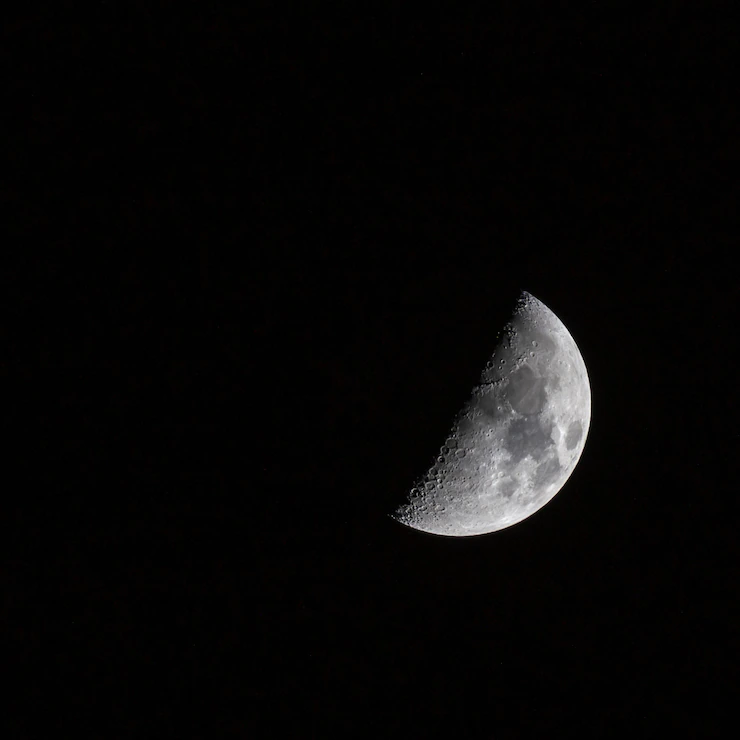


Leave a Reply